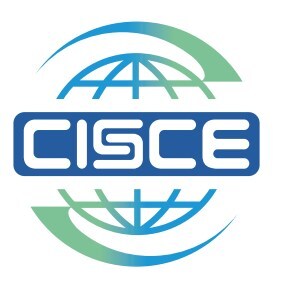User1st Highlights Pitfalls of Automated and AI-Powered Digital Accessibility Solutions
Press Releases
Mar 12, 2020
WASHINGTON, March 12, 2020 /PRNewswire-PRWeb/ — User1st, the provider of the most innovative web accessibility solutions on the market, today published an article that explains why companies should be cautious when deploying automated or AI-powered solutions for making their websites and apps accessible to persons with disabilities.
In his article titled “Buyer Beware of Fully Automated Digital Accessibility Software,” User1st Director of Product Development Tom Arnold argues that although automation and AI hold the promises of reducing the overall work required for maintaining accessibility compliance, they only catch about 40% of accessibility errors, which can leave an organization vulnerable to a lawsuit.
“Automation and AI is intended to support, but not replace, the human effort in digital accessibility,” writes Arnold. “Humans use your website and apps, not machines. There is no replacement for human testing when it comes to providing the best user and customer experience. Don’t fall for the false promises of ‘fully automated compliance.'”
Digital accessibility is the ability of a website, mobile application or electronic document to be easily navigated and understood by all users of varied abilities, including those who have visual, auditory, motor or cognitive disabilities. Applying digital accessibility is like translating your website into a different language, only this language supports people with visual, mobility, and even cognitive impairments.
Arnold’s full article is as follows
Buyer Beware of Fully Automated Digital Accessibility Software
By Tom Arnold, Director of Product Management
2020 looks to be a record setting year for digital accessibility lawsuits based upon the number of cases alone filed in January and February. And if your company uses 100% automated or vendor-proclaimed artificial intelligence (AI) accessibility software, you are NOT protected. Indeed, a number of the current lawsuits are against companies that implemented an automated accessibility solution.
By way of background, there are an increasing number of federal and state laws and court cases that require a company’s customer-facing websites, mobile applications, and other digital assets to be accessible to individuals with disabilities (including visual, hearing, and cognitive impairments). Compliance in this legal environment means developing and modifying website elements and content in a manner that can be used and understood by such individuals (e.g., alt-text explanations for images, closed-captioning for video/audio files, appropriate color contrasting for font and background).
Many accessibility technology vendors make promises of fast, easy, and fully automated accessibility solutions. These vendors promise, for example, that within 48 hours your website can be “fully compliant” without any work by your team, without adapting or changing the source code of your customer-facing digital assets, with no manual testing efforts on their part, and with a cost that’s not even a blemish to your budget. Sounds too good to be true, right? In many cases it is.
First, many of these accessibility technology vendors do not even back the quality of their solution or warrant compliance. Indeed, many of these vendors state in their own terms of service that they do not guarantee accessibility compliance for the elements supposedly fixed by their automated solutions and further severely limit their liability if an accessibility issue occurs. More importantly, these vendors often do not explain that their technology solutions only address some limited, very basic requirements for accessibility. Buyer beware of remediation products that do not address the much broader set of user inaccessibility issues.
So, what about that magical automated or AI-powered solution to deliver full web or digital accessibility? While automation and AI has the promise of reducing the work required for accessibility, these 100% guarantees fail manual, human accessibility testing every time, leaving your organization vulnerable to a lawsuit. Automation and AI is intended to support, but not replace, the human effort.
All remediation technologies are not the same. It is worth your time and company’s reputation to understand digital accessibility and the remediation capability you need before you buy. The last thing your organization needs is a second lawsuit (or multiple lawsuits), which is becoming another trend in digital accessibility.
Where to start?
Digital accessibility goes beyond compliance. It’s a business decision to better serve all customers, regardless of abilities, via your website, app, and online communications. Therefore, design an accessibility plan that meets your specific compliance needs, organizational goals, and available resources for testing and remediating your digital assets. Taking a pro-active approach to accessibility can improve your customers’ experience while mitigating risk and protecting your organization from potential lawsuits.
Improving your organization’s accessibility can be a significant internal undertaking. Because your digital services are continuously updated, you need the tools to continuously test and remediate. First, consider the accessibility knowledge of your team and the bandwidth for them to remediate or take on continuous remediation in the future.
Next, determine the current state of your digital assets through automated and manual testing. Even if you have an automated or AI-powered accessibility widget, it is worth the time to test and ensure accessibility, thereby protecting your company’s reputation. Automated testing only catches about 40% of accessibility errors. You can also contract with third party accessibility testing providers for manual testing if your current company doesn’t have the capability. Remember, automated or AI-powered tools are supposed to augment manual accessibility testing efforts, not replace them.
Now you know what’s wrong, how do you fix it? Through reliable remediation tools and solutions. If you have a strong development team, you should be able to fix errors in-house. If you have a smaller or inexperienced team, you may want to work with a vendor to fix any errors.
There are other immediate steps you can take to improving the accessibility of your digital assets. For example, you can add an accessibility statement to your website which communicates your company’s commitment to an accessible customer experience and allows for feedback. Develop a compliance program to ensure that all future digital assets are developed for accessibility.
Here’s the bottom line. Humans use your website and apps, not machines. There is no replacement for human testing when it comes to providing the best user and customer experience. Caring for customers through digital accessibility demonstrates an organization’s willingness to go beyond regulatory compliance. So, don’t fall for the false promises of “fully automated compliance.” Your users deserve better. Your organization’s reputation depends on the right digital accessibility solutions.
Tom Arnold has nearly 10 years of experience in product management, testing, and implementation serving the IT services and banking industries. Tom holds an MBA from Stony Brook University Graduate School and several licenses and certifications, including a Certified Professional in Accessibility Core Competencies (CPACC) from the International Association of Accessibility Professionals and IBM Applied AI Certification.
About User1st
User1st provides the most advanced web accessibility solutions on the market for testing, remediation, monitoring, and compliance. User1st is the only company that offers both customized short-term fixes and tailored long-term solutions for meeting the international specifications of the Web Content Accessibility Guidelines. Trusted by organizations of all sizes, including Fortune 500 companies and large government organizations, User1st’s solutions are deployed in a variety of industries worldwide, including financial services, retail, government, and healthcare. For more information, visit http://www.user1st.com/ and follow User1st on LinkedIn, Facebook, and Twitter @User1st.
SOURCE User1st



